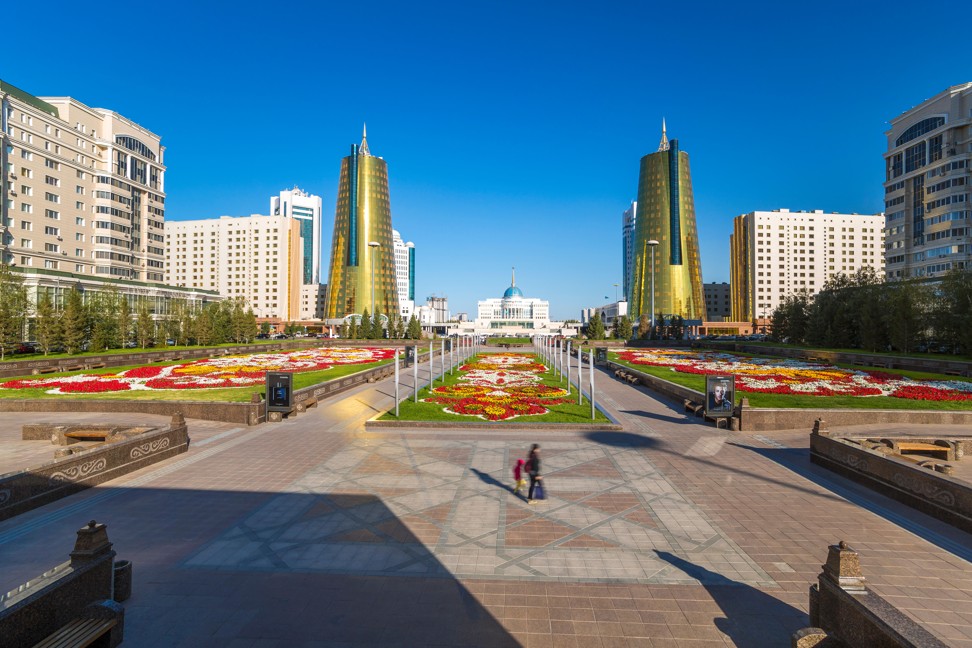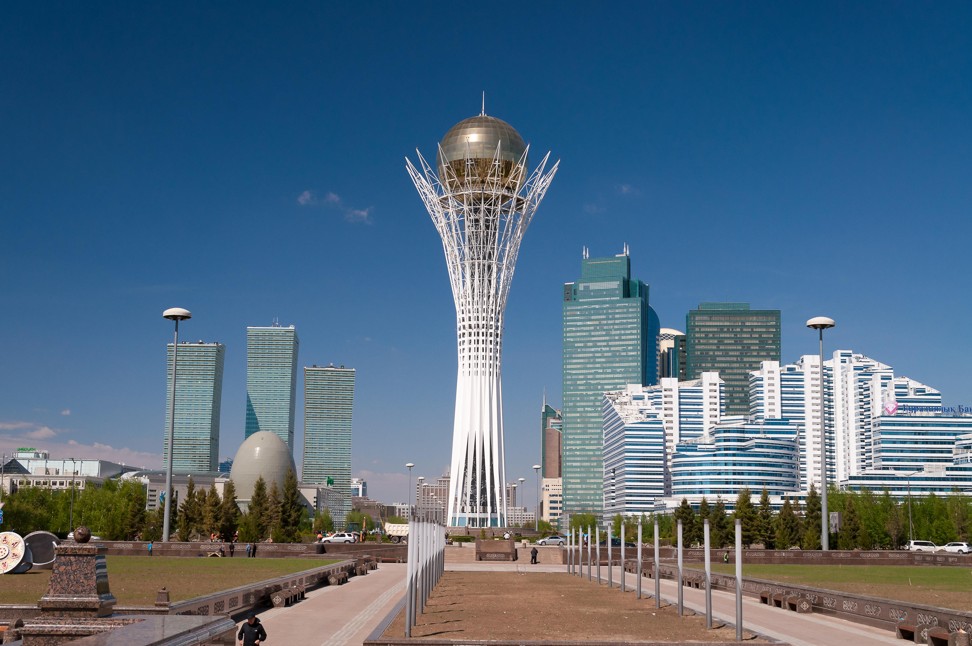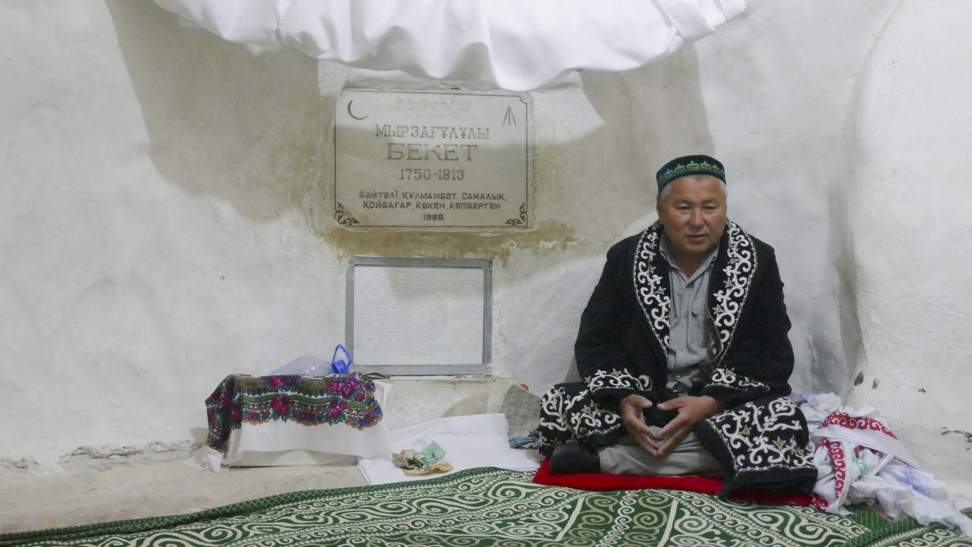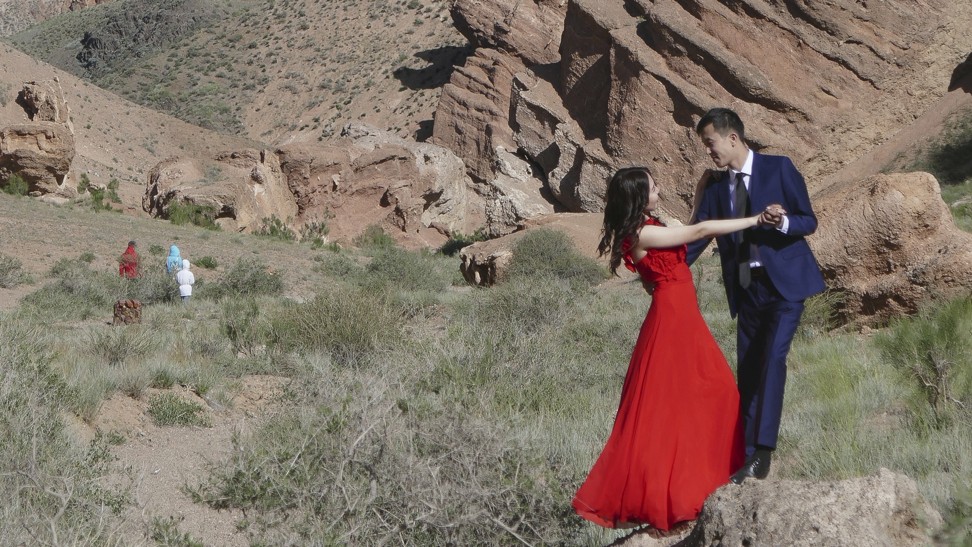
Five reasons to see Kazakhstan – caviar, kebabs, a grand canyon, and its weirdly futuristic capital among them
Central Asia’s biggest country is full of pleasant surprises, whether it’s visiting ancient underground mosques, or admiring futuristic architecture, there’s something for everyone
Many tourists think of Kazakhstan as a “flyover” country on their way to or from Asia and Europe – so why should anyone stop in this, the biggest of the ’Stans? There are plenty of reasons to do so, from the quirky architecture of its new capital to a host of outdoor adventures.
Ashgabat: the weird, wonderful and eerily empty capital of Turkmenistan
There is also traditional food to try, such as delicious grilled lamb shashlik, and the national dish of beshbarmak (mutton, potato and pasta). If you are honoured enough to be a guest in a Kazakh family home, you could even be presented with a sheep’s head – specifically its ears, eyes and tongue.
Increasingly modern, confident and outward-looking, this surprisingly varied country is worth a place on your bucket list. Here are five reasons why.
1. Almaty, the old city
Kazakhstan’s old capital and still its main city, Almaty rarely freezes in winter – unlike Astana, which lies 1,000km to its north – and is a few degrees warmer than Astana all year. Dotted with hills and with the snow-capped Tian Shan mountains to the south, Almaty can be a disorientating place to get around, so take the cable car up to Kok Tobe. From here, underneath a television tower 372 metres (1,220 feet) high, you can get your bearings and even ride a Ferris wheel.
Visit at sunset to see the Tian Shan mountains turn orange and pink; if you here in winter, take a short cable car ride up to the Shymbulak Ski Resort for an Alpine-style experience at Central Asian prices.
Back in the city, visit Almaty's Kazakh Museum of Folk Musical Instruments for a chance to see a dombra (a traditional two-stringed lute) performance. If you’re lucky you might also catch an orteke performance, in which the dombra player taps his feet on a pedal and three carved wooden goat puppets attached to sticks leap into the air and appear to dance in time to the music.

2. Astana, the futuristic Kazakh capital
Built 21 years ago to shake off Kazakhstan’s Soviet history, Astana is the country’s shiny new showcase to the world. Getting most of the attention is the dramatic Bayterek Tower, which is supposed to represent a local myth about a “tree of life” cradling a golden egg.
The 105-metre tall structure dominates a grid-like, purpose-built central quadrant that also contains the Norman Foster-designed Khan Shatyr (a tent-shaped shopping mall), the Ak Orda Presidential Palace, two sparkling new mosques and a grand Italianate opera house.

Perhaps the strangest construction of all is also Astana’s best attraction. Built for last year’s Astana Expo-2017, a huge glass globe on the city’s outskirts now doubles as the Future Energy Museum, which has lively exhibitions on future energy of all kinds, from solar, wind and water to biomass, kinetic and space energy.
There’s an entire floor devoted to the history of space exploration. However, an excellent tennis-court-sized mock-up of the lunar surface, complete with possible future exploration vehicles, is where to head if you’re short on time.
There are plans for a monorail and various smart city projects, but lacking as it is in public spaces, the city feels more like a place for politicians and diplomats than the general public. The weather blows hot and cold; it can reach 27 degrees Celsius (81 degrees Fahrenheit) in summer, but sink to -21 degrees in winter. Even in summer a hot day can be followed by a cold, windy day.

3. Mangystau’s underground mosques
After visiting a futuristic city, glimpse an ancient way of life at the rock-sculpted tombs of Sufi mystics Beket-Ata and Shopan-Ata. A long day trip from Aktau in Kazakhstan’s arid Mangystau region, the tomb of Beket-Ata is reached by walking an easy path that winds down the side of a mountain and into the Oglandy Valley.
There are panoramic views of yellow and white rock ringing the plains to the south, while below are ridges strewn with spherical boulders. The path ends at a small opening in the limestone rock.
Inside are two small carpeted rooms, one with a “lucky tree” that one should walk around once, and another where an imam recites passages from the Koran. Be sure to exit backwards (which is not easy) using your left foot.
Though less dramatic, Shopan-Ata is another pilgrimage site whose underground mosques are worth a quick stop, as is a photo stop on the ridge through the dramatic semi-desert rock formations of Ustyurt National Park, a wide desert canyon that has applied for Unesco Geopark status.

4. Charyn National Park
While it’s not as big or as old as its counterpart in Arizona, Kazakhstan’s answer to the Grand Canyon is a hiker’s paradise. Charyn Canyon National Park’s Valley of Castles is the easiest area to reach.
After scrambling down the side of the dramatic red sandstone canyon for about 100 metres, you will find a gravel path. This path winds past bizarrely eroded rocky outcrops that look to have formed the shapes of animals and faces, before finishing at the fast-flowing Charyn River.
It makes for an easy three-hour circular hike, though you can stay the night in a yurt or a bamboo bungalow near the river in the Charyn Canyon Eco-Park. Since it’s at the end of the Valley of Castles, staying there is a must if you want to spend a second day exploring Charyn’s lesser known Temirlik, Yellow, Red and Bestamak canyons.
Five of the best Asian countries to go skiing, plus our top resort pick
To reach Charyn Canyon – the best way is with an organised tour from Almaty, 215km to the west – you must first cross Kazakhstan’s “Little Switzerland”. The drive takes you down the route of the ancient Great Silk Road, through flat plains of mostly fallow green grass but always with the Tian Shan range to the south. You feel as if you are skirting the Alps, until you come across the vast Kokpek Valley, with its green, felt-like mountains enclosing flat grassland that has huge herds of horses.
Here the A-352 road continues north to the western border of China. Go the other way and the flat valley begins to tear apart into canyons at Charyn. Already a well-preserved national park, it looks set to be included in Unesco’s World Network of Biosphere Reserves.

5. The ‘Kazakh Riviera’ on the Caspian Sea
The bustling city of Aktau is where Kazakhstan comes for sun, sea … and sturgeon. Right on the Caspian Sea, there are many plans to build coastal resorts south of Aktau, but it is growing because of oil – 24 per cent of the country’s oil production occurs near here.
Just inland are thousands of small “nodding donkey” oil wells that will work day and night until the mid-2020s, though it’s the offshore rigs on the Caspian Sea’s Kashagan offshore oilfield that are making Kazakhstan wealthy.
Samarkand: the cultural crossroads of Central Asia
The Caspian Sea doesn’t just bring oil wealth to Aktau. Just north of the city is one of a number of new Kazakh osseter (sturgeon) farms that are producing caviar. Caviar bought here costs US$70 per 100g, less than half what it costs abroad, and comes with a certificate of authentication.
You could also take from here a 45-minute flight (though a 21-hour ferry also operates sporadically) to the big city of Baku across the Caspian Sea in Azerbaijan. Aktau could make an interesting side trip during a visit to the Azerbaijan Formula 1 Grand Prix.
Getting there
Air Astana fly three times per week between Hong Kong and Almaty. The flight takes six hours.

